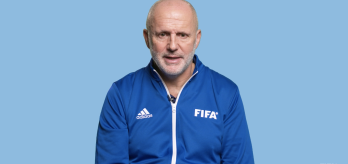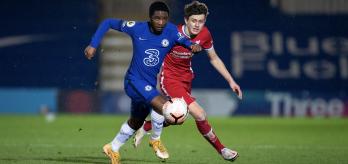Jan Verbeek has conducted extensive research on relative age effects and how to mitigate them. In this presentation, he defines what we mean by relative age effects and explains how these effects arise. He then shows the impact they can have on youth football and discusses what coaches can do to help players of all ages showcase their talent on equal terms. The presentation is followed by a Q&A hosted by Dr Paul Bradley of FIFA and featuring Dr Adam Kelly of Birmingham City University, another expert on the Relative Age Effect.
To understand relative age effects, the mechanisms behind them and how they can constrain player development.
Relative age effects are a systemic issue that negatively affect youth football by disproportionately favouring older players within individual age brackets.
Explore options for countering relative age effects, such as age-order shirt numbering and raising awareness of the issue more generally.
Watch presentation
Read summary
Part 1: Introducing relative age effects and the mechanisms behind them
Young footballers are traditionally grouped together according to the year they were born. This is supposed to ensure fair competition, but it doesn't always work out that way. For instance, the oldest children in a given age bracket can be up to two years older than some of their team-mates, giving them major advantages over their younger peers. These advantages are known as "relative age effects."
Before we can counteract relative age effects, we need to understand the mechanisms and constraints associated with them. They can benefit older players in many different ways, from increased physical strength to greater self-confidence, more playing time and better access to facilities. They can also snowball over a player's career, and have major repercussions for youth football as a whole.
Part 2: How relative age effects affect youth football, and compensating for them
Relative age effects can make older players seem more talented than younger team-mates. This can lead to a lack of opportunities for younger players, as coaches tend to pick older players for representative teams. Some players react by dropping out of organised football altogether, while others work even harder to overcome the relative age effect.
In the last part of his presentation, Jan explores some ideas for balancing relative age effects, such as age-order shirt numbering, age quotas and raising awareness. Finally, he highlights the research that needs to be done to eliminate relative age effects and create a genuinely level playing field for young players, such as long-term field studies following young players as they climb the pyramid.
Q&A
01:00
Who or what creates relative age effect biases?
03:11
Do we (really) have a problem with relative age effects? Doesn't it even out at senior level?
06:18
If we have a knowledge of the constraints associated with the relative age effect, (details at 12:30), how can we use that knowledge to our advantage when working with players and developing individual approaches to youth development?
08:57
Practical applications: If we stopped selecting kids based on age, would it solve the problem?
11:28
What are the best solutions for mitigating the Relative Age Effect?
18:18
Is there any research on RAEs affecting technique, tactics and psycho-social development?
24:15
If you could give a coach some advice on the simplest and most effective practices in relation to the Relative Age Effect, what advice would you give them?











